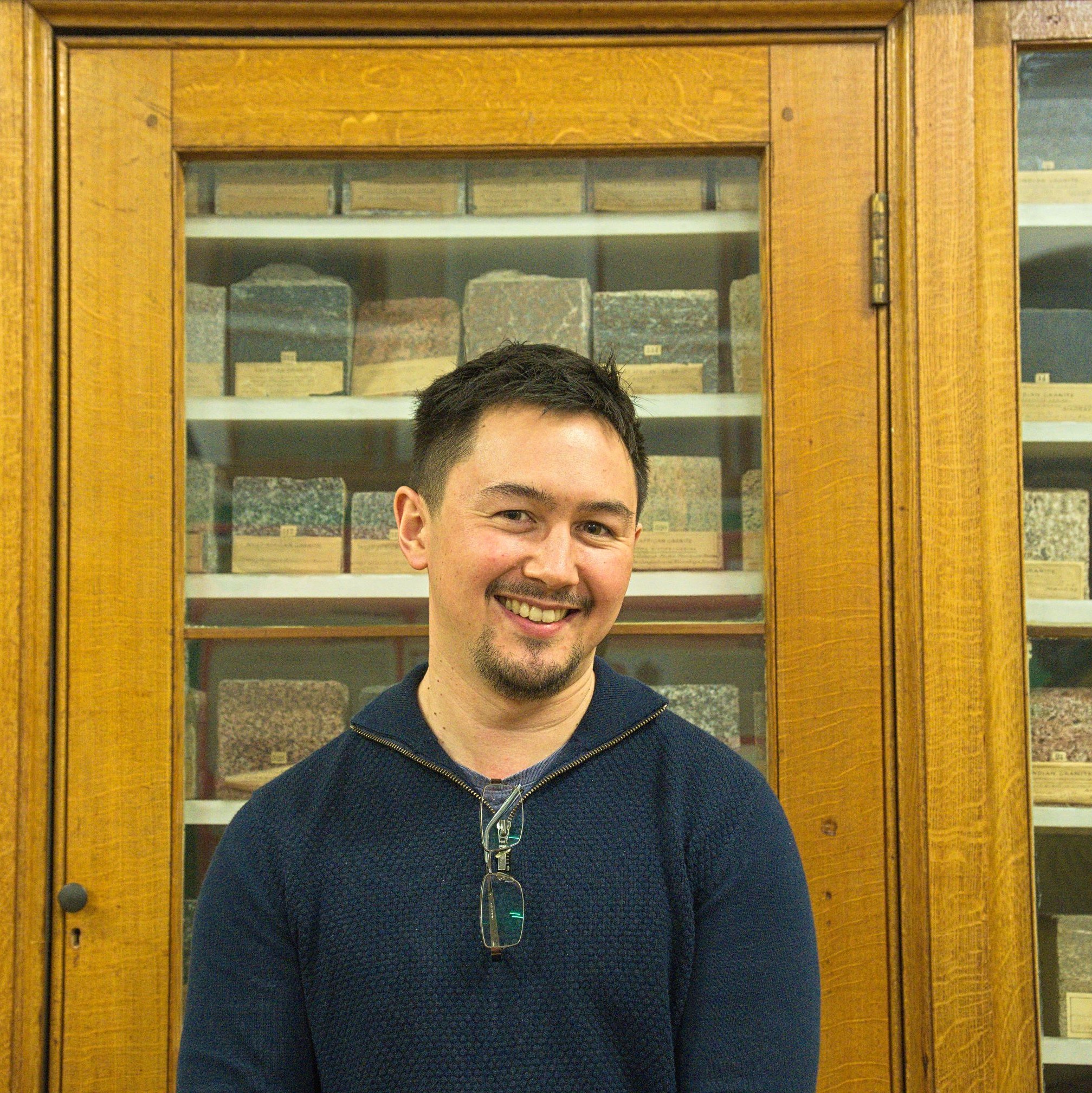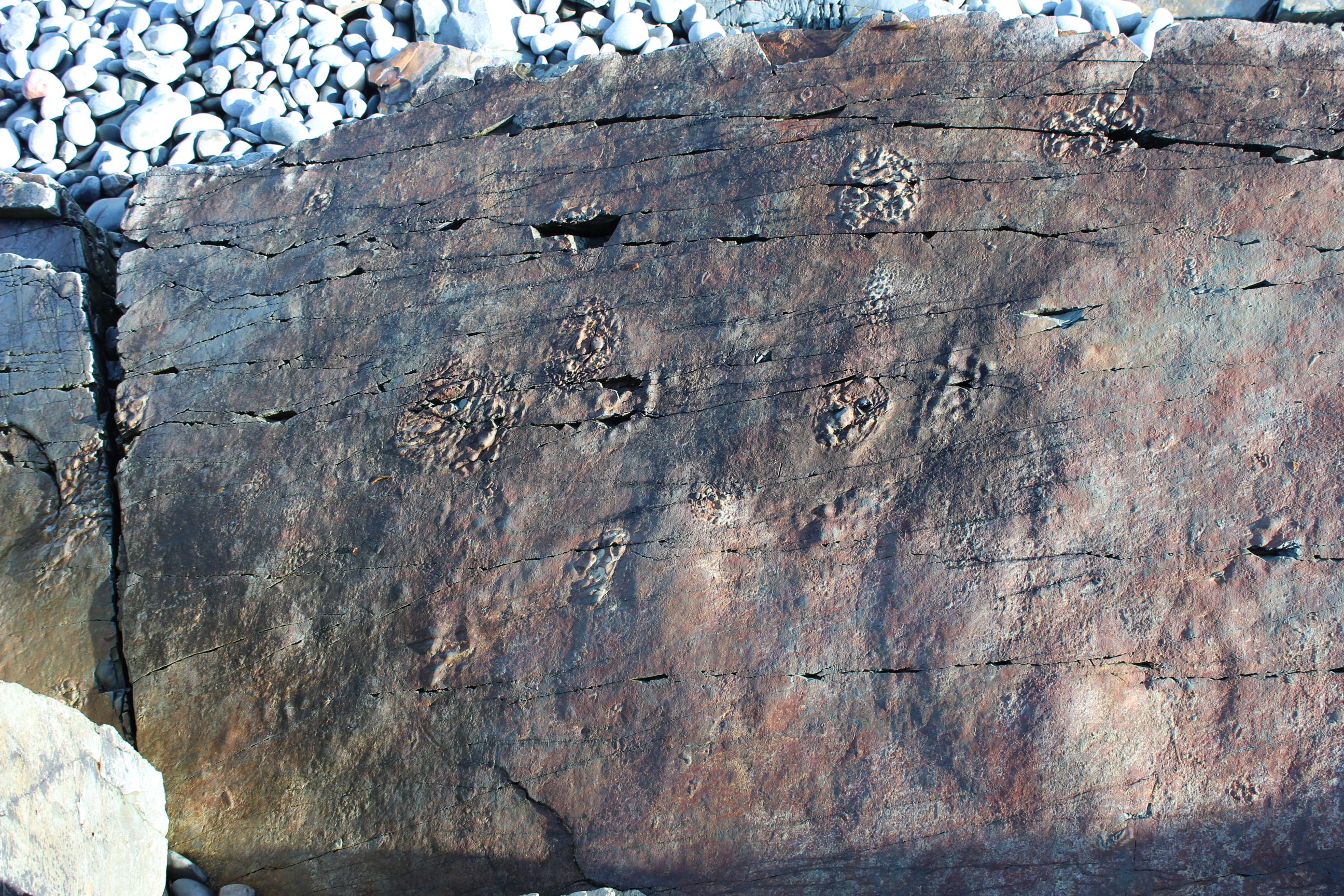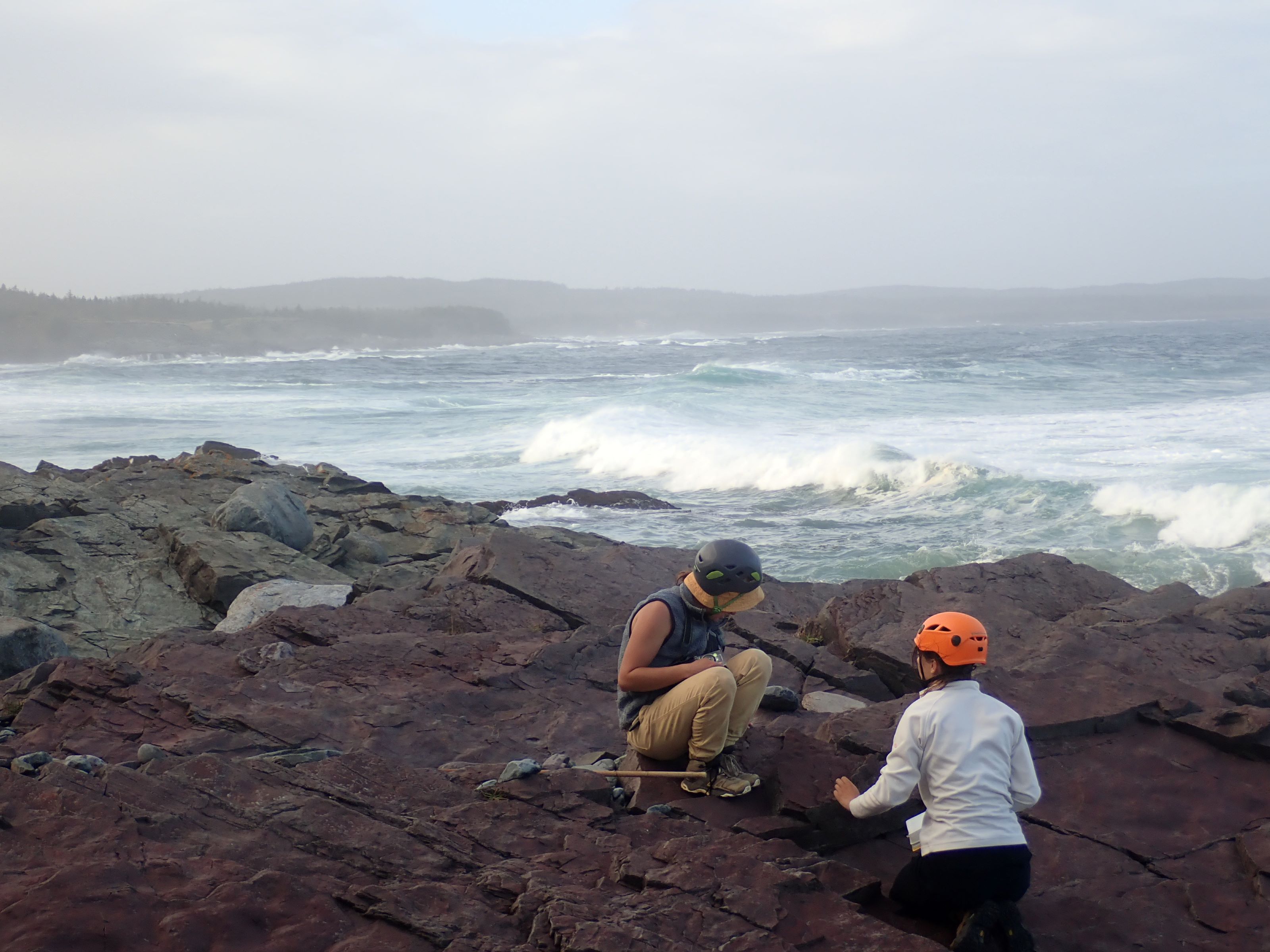Dr Alex Liu joined the Department of Earth Sciences in 2016 and is an Associate Professor in Palaeobiology and a Fellow of Girton College. He reflects on his work with Erin Martin-Jones.
You study Ediacaran fossils, why are they significant?

Ediacaran macrofossils range between 579 and 539 million years in age, and include the first examples of large, complex organisms we have in the fossil record. At this time, just before the start of the Cambrian, we see the first possible animals, as well as evidence for the impact they had on sediments and environments.
This is a key transition in Earth’s history, yet we still have so many unknowns, including why animals evolved at this particular time, and what sort of animals the fossils are actually recording. Answering these questions is a major part of what motivates me and my research.
What have been your stand-out fossil-finds?
One of the stand-outs was work in 2011 on strange Ediacaran fossils that look like pizzas: hundreds of them, reaching up to half a metre wide and all different in shape and internal structure. No one knew what they were at the time, but my suggestion that they record the decayed remnants of animals preserved on the seabed has so far stood the test of time.

More recently, working with colleagues in Oxford, we found thin ‘strings’ on bedding planes joining organisms of the same species — we think these are like the reproductive runners or stolons connecting strawberry plants. Quite often it’s the traces of movement these animals left behind, or the way they interacted as a community, that I find the most fascinating aspects of studying life at this time.

What are your research group up to?
Our aim is to understand how and when Ediacaran biota evolved, and whether they impacted the planet. We’re a team with diverse backgrounds, including sedimentologists, geochemists and zoologists. Some are working on the discovery and taxonomy of these fossils, others are trying to pin down the chemical and physical conditions of the environments the organisms lived in.
Have you always been into fossils?
Definitely when I was a lot younger — my Mum has drawings of dinosaurs and fossils I did when I was about five — but my interest in them waned in school and it wasn’t until University applications that I discovered Earth Sciences. I studied at Oxford, where my favourite topics were geochemistry and palaeontology — I couldn’t choose between the two, so I chose a fourth year project that combined both. Palaeontology won out, and I ended up staying at Oxford for a PhD on Ediacaran fossils. It was a particularly inspiring lecturer — Martin Brasier, a leader in Precambrian palaeontology — who encouraged me to take that path and, after a postdoc at Girton College, Cambridge, I moved to Bristol for a research fellowship before returning to Cambridge as a lecturer.
Where in the world has your work taken you, so far?
The opportunity for discovery is a major bonus of my research — when I am out in the field I am reminded how lucky I am that fossil-hunting in beautiful places is part of my job!
Probably the most geologically incredible place I’ve been is the Ediacara Hills in southern Australia — a well-known Ediacaran site where almost every rock you turn over contains a fossil. Cultural highlights have been on the White Sea coast of Russia, where we drove past Russia’s main nuclear submarine base; and in Brazil in 2016 where I witnessed political protests as the President was impeached.

What about your Leverhulme project?
Our current project is looking at the sedimentary environments in which Ediacaran fossils are found, to determine how environmental conditions control the types of fossils, and styles of fossil preservation we see in global Ediacaran sites. We’re specifically asking whether there was a mass extinction at the end of the Ediacaran. With sedimentary geologists Brennan O’Connell and Will McMahon, and PhD students Cat Boddy and Phil Vixseboxse, I have been working in Namibia and Newfoundland in the past year to gather data that should bring us closer to an accurate record of changing Ediacaran diversity through time.

Is it true you’re known for your sense of humour?
It’s fair to say I try not to take myself too seriously! Last year I had some fun in running two back-to-back races over a weekend — the 10km Cambridge Town and Gown, then the Cambridge Half Marathon — in an inflatable T. rex costume to raise funds for a new book trolley and teaching resources in the Sedgwick Museum. I seemed to be popular with children lining the route! I also play the trombone – the most entertaining musical instrument in my view – in the Girton Fellows and Students Brass Band, and the College orchestra.

Read more about Alex’s research here.
This text is reprinted from GeoCam alumni magazine.
Feature image: Sunset over a quiver tree forest, southern Namibia.


